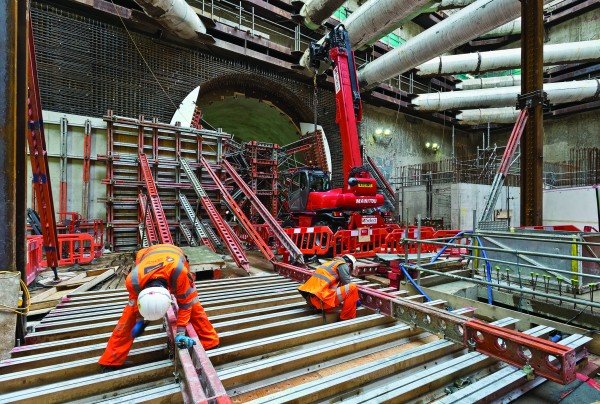Paradigm shift in safety management
 John Green explains the thinking behind Laing O’Rourke’s ‘next gear’ approach to safety
John Green explains the thinking behind Laing O’Rourke’s ‘next gear’ approach to safety
Safety has always had a high profile in construction and engineering. By its very nature, however, it’s a profession tied to negativity. We swing into action if things go wrong, count incidents and issues, and if we can’t get rid of them think we’ve failed or tell others that they’ve failed.
We continue to identify how injuries occur and implement ways to reduce harm, whether it’s physiological, psychological or environmental, but we need a paradigm shift in safety management to continue to improve. At Laing O’Rourke, and across the industry, we have reduced accident rates considerably but new challenges have arisen that have not been obvious before.
Although we’ve been eliminating needless, predictable accidents, we’re now at a point where these rates are not dropping any further. We’ve plateaued and it is proving a challenge to make further gains. It is not just the UK; I know from my experience in Australia that it is an international issue.
Historically, our focus has been on reducing incident rates but as these targets started to come into view the world began to look different. We realised that reducing them further was not a matter of trying harder or engaging hearts and minds but looking at safety differently. The old mindset might be inhibiting future progress – the predictive value of low consequence accidents as a warning of high impact events was effectively zero.
It’s a dangerous assumption that the absence of reported accidents equals good safety. The fatality rate in construction increases when the accident frequency declines. If you look at major accidents and incidents across a number of industries, invariably you hear that their project or event had “an excellent safety record” previously.
What was fit for purpose ten years ago isn’t any more. Our Mission Zero campaign has successfully reduced accidents but we’re now taking the next step, a paradigm shift with ‘next gear’. I believe this will have a significant impact on future major projects. Backward looking data doesn’t improve safety performance. We’ll use a narrative, not numbers, to describe an organisation with effective management. Communication is key.
Traditionally, we’ve seen people as the problem, citing human error as the largest cause of accidents. But if they are responsible for what goes wrong, who is responsible for what went right? The workforce has been seen as unreliable in safety terms, needing to be controlled, constrained and monitored. People, however, navigate complex systems successfully every day and can demonstrate that they are adaptive when empowered.
Perceptions of safety should be based not around the absence of negatives and perfect audit scores, but the presence of positives. People with credibility must be encouraged to go against common interpretations and be allowed to take risks. Without risk there is no innovation. Innovation is vital.
Moving forward, we are treating safety as an ethical responsibility, flowing downwards through the company and not a bureaucratic activity designed to protect against litigation. Paper and systems will be the enablers; learning from mistakes shared. An alternative cultural view will be applied to ensure the gap between written guidance and actual work is understood and that work around innovation to get the job done is explored.
We must do things differently so that colleagues can successfully create a safer environment. Safety will be governed by people on-site, with power over their decisions, who report back to the shop floor or project teams.
Our people are a source of diversity, insight and wisdom, not purely of risk. We should trust people and mistrust unnecessary bureaucracy. Don’t obsess with what went wrong but investigate what went well, cultivating open dialogue, and consider risk taking and innovative ideas that will create a safer yet dynamic industry.
John Green is HSEQ director, European Hub at Laing O’Rourke
Paradigm shift in safety management
John Green explains the thinking behind Laing O’Rourke’s ‘next gear’ approach to safety Safety has always had a high profile
Safety & Health Practitioner
SHP - Health and Safety News, Legislation, PPE, CPD and Resources Related Topics
What exactly is risk management?
Take with a large pinch of salt
Beyond ticking the box, in conversation with Andrew Sharman


Excellent post. We have very similar views on the future of safety and where we should concentrate next. I believe better safety communication is a key element.
Wow, how long have I waited to hear this language coming from a Teir One outfit. Well done John Green on having the courage to get involved in another (different) conversation about risk and safety; one that looks at how people discern and make sense of risk. If I might add something to that conversation. I believe that a change in the language of safety is also needed in order to lead people to think differently about how we care for our people. I believe that conversations in the workplace, which uses language focussed on the “wellbeing of our people”… Read more »